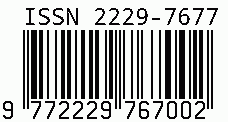
International Journal on Science and Technology
E-ISSN: 2229-7677
•
Impact Factor: 9.88
A Widely Indexed Open Access Peer Reviewed Multidisciplinary Bi-monthly Scholarly International Journal
Plagiarism is checked by the leading plagiarism checker
Call for Paper
Volume 16 Issue 4
October-December 2025
Indexing Partners



















Non-Invasive Gender Classification of Chicken Eggs Based on Image Analysis
| Author(s) | Prof. Dr. Pavedan K, Ms. Kaveyaa shree S K, Ms. Tamil selvi M, Ms. Prathysha shri J |
|---|---|
| Country | India |
| Abstract | Hatched male chicks are usually killed because layer hens are only used by females. About 7 billion chicks are killed each year shortly after hatching. This situation is wrong and has a big economic cost. You can determine a chick's sex either before or after it hatches. While it's better to make this determination before hatching, the success rate is not very high. The Shape Index (SI) describes the shape of an egg by comparing its short diameter to its long diameter. Although SI varies by egg type, chick sex and SI are significantly related (r = 0.78). So, even though our classification accuracy was not as good as with ducks, we were still able to estimate chick gender based on SI. We measured seven additional parameters and included them in our analysis: mass, ovality, volume, eccentricity, short axis, and long axis. When we applied model predictions from previous studies to the probability of female chick hatching equation, we correctly classified 71% of the estimates. We estimated that around 80% of our predictions in this study were accurate. In this case, we could potentially save 5.65 billion chicks from being killed. In a similar way, many eggs were not wasted. In this study, we used the form index of the eggs to predict the gender of the chicks with a pre-trained TensorFlow model. |
| Keywords | Morphological Features, Non-Invasive Classification, Shape Index |
| Published In | Volume 16, Issue 3, July-September 2025 |
| Published On | 2025-07-10 |
| DOI | https://doi.org/10.71097/IJSAT.v16.i3.6839 |
| Short DOI | https://doi.org/g9sx6j |
Share this


CrossRef DOI is assigned to each research paper published in our journal.
IJSAT DOI prefix is
10.71097/IJSAT
Downloads
All research papers published on this website are licensed under Creative Commons Attribution-ShareAlike 4.0 International License, and all rights belong to their respective authors/researchers.

